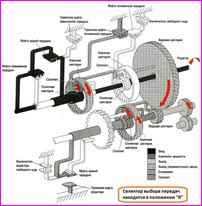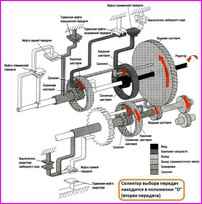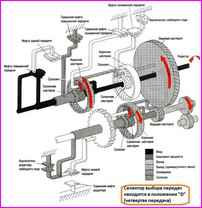Automatic transmission with adaptive control system provides optimal shifting for virtually all driving styles and road conditions
A feature of the Mazda 6 gearbox compared to previous generations of automatic gearboxes is the ability to switch from fully automatic control mode to manual mode (the so-called sequential gearbox), in which the driver independently chooses the moment of switching to an overdrive during acceleration of the car

This allows you to, if desired, achieve more intense acceleration compared to automatic mode, artificially delaying the upshift, which allows you to bring the engine speed to the maximum torque range
At the same time, the electronic control system constantly monitors the vehicle speed and engine load, eliminates driver error by preventing the driver from shifting up at low speed to avoid overloading the engine, and preventing the driver from downshifting at too high a speed, which eliminates the possibility of exceeding the maximum permissible engine speed
When the vehicle speed decreases, the gears automatically switch to lower gears without the participation of the driver.
When the car comes to a complete stop, 1st gear is automatically engaged.
The automatic transmission consists of a torque converter, a pump, a planetary gear, multi-disc clutches, multi-disc brakes and a valve block.
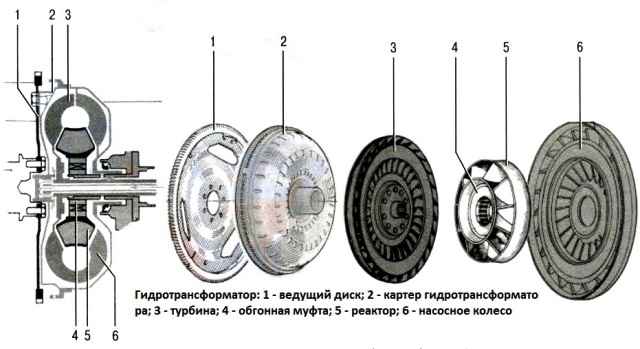
The torque converter acts as a clutch and serves to smoothly connect the engine and gearbox mechanism, as well as to increase torque at the beginning of the car
The torque converter housing is connected to the engine crankshaft through the drive plate and rotates constantly when the engine is running.
The inside of the torque converter is filled with automatic transmission fluid
The engine rotates the torque converter and drives the pump wheel, which creates flows of working fluid in the direction of the turbine wheel. The turbine wheel begins to rotate due to the flow of working fluid created by the pump wheel
With a large difference in the speeds of rotation of the turbine and pump wheels, the reactor changes the direction of the fluid flow, increasing the torque.
As the speed difference decreases, it becomes unnecessary and is therefore installed on the freewheel.
A pump mounted in front of the gearbox housing pressurizes and supplies fluid to all systems in the gearbox.
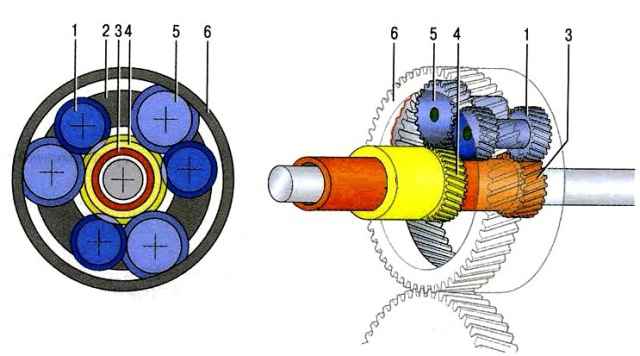
Planetary gearbox of the Ravigne system: 1 - long satellite; 2 - carrier; 3 - small sun gear; 4 - large sun gear; 5 - short satellite; 6 - ring gear
The planetary gearbox of the Ravignier system is a gear train with external and internal gears, which provides various ways of connecting its elements to obtain various gear ratios.
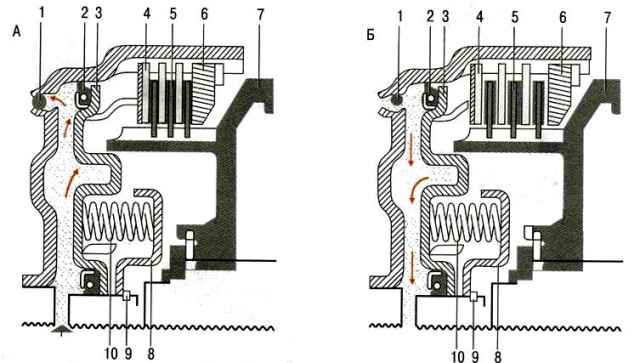
Scheme of operation of a multi-plate clutch: A - multi-plate clutch is on; B - multi-plate clutch is off; 1 - ball valve; 2 - sealing ring; 3 - piston; 4 - frictionth disk; 5 - friction disc with pads; 6 - thrust disk; 7 - clutch hub; 8 - spring stop; 9 - retaining ring; 10 - return spring
The principles of operation of multi-plate clutches and disc brakes are very similar, the difference is that the multi-plate clutch connects the gearbox links to each other, and the disc brake connects to the gearbox housing.
The working fluid supplied to the clutch actuates the piston - the friction discs are compressed. The links blocked by the clutch begin to rotate in one piece.
When the disc brakes are released, the working fluid stops flowing into the clutch and the piston returns to its original position under the action of the return spring.
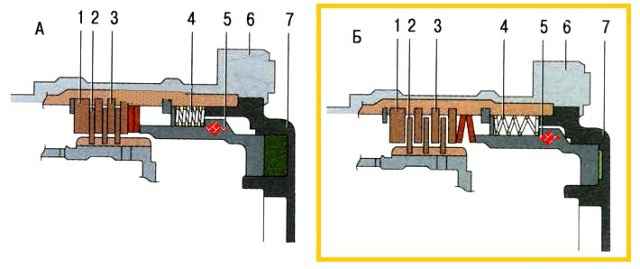
Scheme of operation of the disc brake: A - brakes on; B - brakes off; 1 - thrust disk; 2 - friction brake discs with pads; 3 - friction disc; 4 - return spring; 5 - piston; 6 - gearbox housing; 7 - gearbox housing cover
The design feature of a multi-plate clutch is that it is in constant rotation and under the action of centrifugal force acting on the working fluid, pressure is created that does not allow the clutch to unlock.
In addition, a ball valve is installed in the coupling. It is located as close to the edge as possible from the center of the coupling
When the pressure of the working fluid in the chamber of the multi-plate clutch increases, the ball valve closes the drain hole, and when the pressure in the chamber decreases, the ball valve opens the drain hole under the action of centrifugal force and the clutch unlocks.
The principle of operation and power distribution in an automatic transmission are shown in the figures
The automatic transmission control drive is cable-operated, designed on the same principle as the manual transmission control drive, but differs from it in the number and design of parts
The automatic transmission selector is installed in the same place on the floor tunnel as the manual transmission control lever, and is connected to the control unit on the gearbox by a control cable.
The differential of an automatic transmission is completely similar in design to the differential of a manual transmission edach.
To repair a transmission, especially an automatic transmission, a large set of special tools and appropriate training of the performer are required, therefore, this subsection discusses only the removal and installation of the gearbox, the replacement of its seals, and the repair of the drive.
If necessary, have the gearbox repaired by a specialist workshop.







